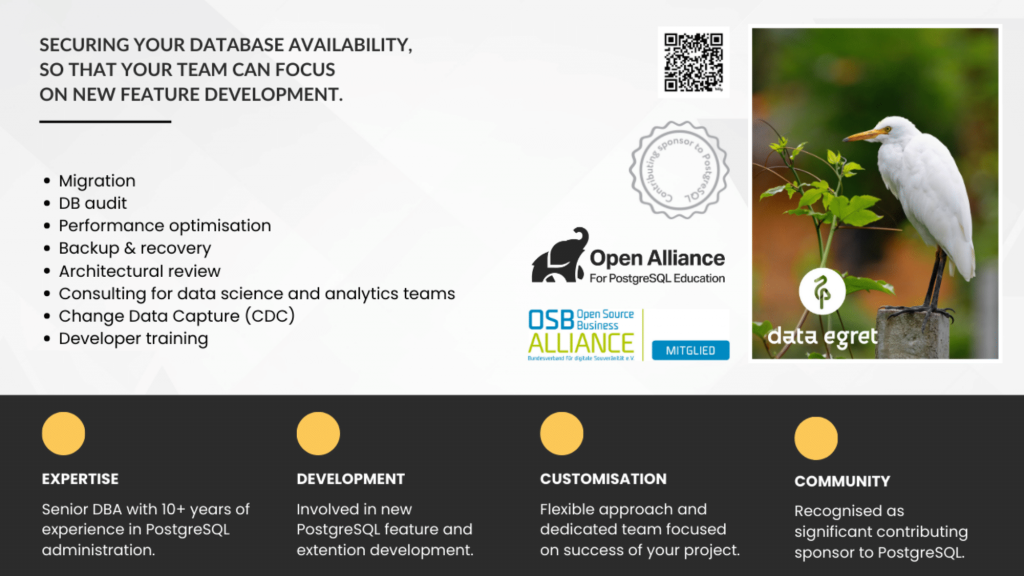Álvaro Hernández: How to Build Postgres with Zig: A Drop-In GCC/Clang Alternative
May. 23rd, 2025 02:52 pmWhat’s Zig and Zig’s C/C++ compiler?
In case you are not familiar with it, Zig is a programming language. Among other characteristics, Zig prides itself on being a low-level / systems programming language with great interoperability with C and C++. Unlike other comparable languages like Rust, it does explicit memory allocation / freeing (even though it adds cool features like the defer keyword), so it seems to have a mental model closer to C, in which Postgres is programmed. This also makes it a very interesting language for developing Postgres extensions in Zig, and there’s the pgzx framework to help with that.
But other than the extensions, what’s Zig bringing to Postgres and what’s this post really about? Zig’s compiler. It’s quite an advanced piece of technology that, apart from compiling Zig code, can also compile C/C++ code, and does so really well. There’s a mind-blowing blog post from Andrew Kelly, creator of Zig, that I’d recommend reading, about using Zig as a C/C++ compiler, claiming it is a powerful drop-in replacement for GCC/Clang.
zig cc, the command line for Zig’s C compiler, is included with the Zig distribution, which is by itself a self-contained, small downloadable package (41-50MiB on Linux, depending on the architecture). zig cc “supports the same options as Clang, which, in turn, supports the same options as GCC”, making it a drop-in replacement. To achieve this level of compatibility, zig cc uses LLVM behind the scenes (it’s technically a layer on top of an LLVM frontend). As a curiosity, Andrew’s post details how it’s possible that Zig’s distribution is (significantly) smaller than even LLVM binaries!
So if it is a drop-in replacement, building Postgres with zig cc should be easy, right? Let’s give it a try.
Building Postgres with zig cc
It turns out to be quite straightforward.
First we need to download Zig. Zig is statically linked ("Zig’s Linux tarballs are fully statically linked, and therefore work correctly on all Linux distributions.").
Download a
[...]
















